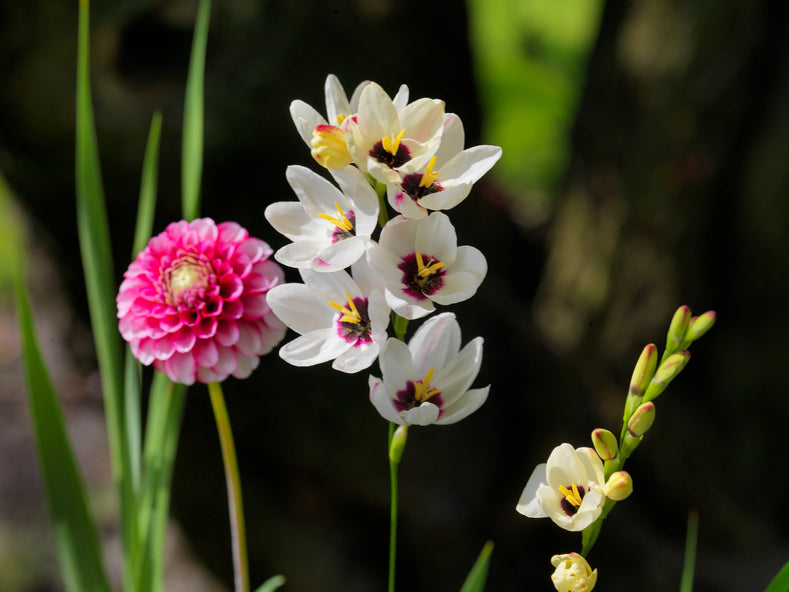Growing Guides:
How to Grow Ixia bulbs
Ixia flowers are another underrated flower that should be a more familiar sight in gardens across the country. Brightly coloured, low maintenance and easy to naturalise, it’s a wonder these pretty garden gems aren’t more commonplace. Highly versatile, ixia flowers are suitable for borders, beds and containers and also make a superb cut flower. Don’t take our word for it, plant some lovely Ixia bulbs this Autumn and discover the beauty of their flowers for yourself.

Follow our simple step-by-step guide to planting Ixia bulbs:
- Ixia bulbs are planted In Autumn, before the ground freezes. Pick a semi-shaded spot with good drainage.
- Dig a hole around 6-8cm deep (follow the general rule of thumb when planting bulbs and give the bulbs at least 2 times their height of soil above them), drop the bulb in, and cover with soil. Make sure you place the bulb the right way up - Ixia bulbs look like a miniature onion with a slightly pointy head and sometimes have wiry roots growing out of the underside - plant with the pointy head / spike pointing up.
- Leave approximately 10cm between each bulb. If you are planting in containers, you can space them a little closer together.
- After planting, water well so that the soil above the bulbs settles.
- Ixia bulbs will flower in Spring. After the flowers die down, allow the plant to enjoy a rest period - there is no need to water much during this period. Leaves will also die back and at this point you can choose to tidy up the plant and remove the old leaves or just let nature take its course.
- Ixias are sometimes sold as ‘Spring planting’ bulbs for Summer flowering. These are in fact ixia corms which have been stored through winter to prevent them from growing. For the first flowering season after planting they may indeed flower in Summer, but after that they will try to revert to their normal autumn/winter growing habit unless they are dug up at the end of that first season and dried off again for the winter. This isn’t ideal so it’s probably best to regard them as summer bedding for one season only, then discard them.

